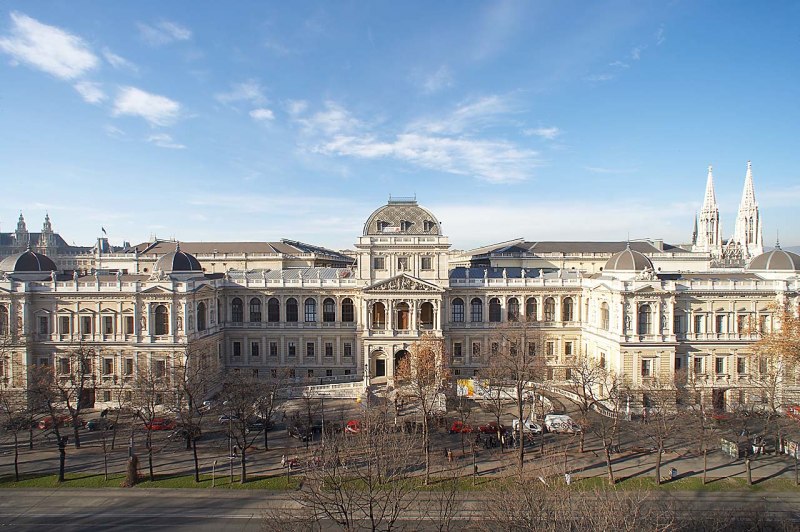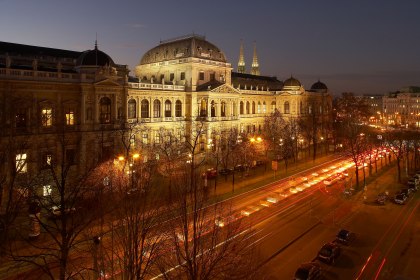The main building of the University of Vienna on the Ringstraße
A university’s “house” is always much more than just a building. Of course it offers the roof under which research is done and students are taught. But most of all, it is the location of the encounter between teachers and students, the space in which the community, the universitas, comes into existence. Thus, the architecture itself becomes a place of identification with the institution.
At the same time, the demands placed on the possible architects by different members of the contracting commission are far from uniform or constant. An analytical look at the Main Building on the Ring opened in 1884 shows which (self-)conception is reflected here and with which ideals the community should identify.
Location search
A return of the potentially insurgent students after the revolution of 1848 to the historically loaded New Aula,
, site of the conspiracy to murder war minister Latour, was out of the question. Emperor Franz Josef thus decided in May of 1854 to build a new university building. Until the opening in October 1884, 30 years later, however, the Alma Mater Rudolphina remained without a center.
Since especially the Faculty of Medicine profited from its proximity to the General Hospital General Hospital in its temporary accommodations, the Minister of Education instructed the two academy professors Eduard van der Nüll and August von Sicardsburg in 1854 to draw up plans for a university at an empty site near the Schwarzspanier church. At this representative building site the main façade of the new university would have directly overlooked the glacis to the Schotten-gate. At this point, nobody thought about giving up the fortifications and the unobstructable glacis.
The next year, another architect wanted to take advantage of the sloping terrain of the glacis for his monumental building, Heinrich von Ferstel,
only 26 years old and a student of Sicardsburg and Van der Nüll, had won the contest for the Votiv church and wanted to construct the important building directly on this terrain for best visibility.
In accordance with the university’s “Catholic character” aimed for by Thun-Hohenstein, the three architects agreed on an architectural combination of university and church, in which the main building would have encompassed the sacral building’s chancel. But this civitas universitatis also was not realized and the whole construction project stagnated until 1868, when finally Heinrich von Ferstel himself was commissioned to do preliminary work for the new building.
Ferstel and the palace of sciences
Ferstel however also at first failed to accomplish an aesthetically successful combination of the two institutions on the irregular building site. Only when faced with the prospect of the representative spot directly on the Ringstraße in 1869, Ferstel enthusiastically threw himself into the plans and tried to give the university an appropriate building in the context of that grand avenue. While the style of the first sketches was oriented towards the neighboring parliament and city hall, the second draft was geared towards a massive monumental building, referencing paragons from the Renaissance.
The few preserved documents regarding the style debate show that from the blueprints to the style and the décor the building represents the self-conception of a deterministic view of science, promising a “victory of light against darkness”. Ferstel attempted to express this idea of light in the architecture as well as the decorations and also set this theme for the ceremonial hall. When the artists Franz Matsch and Gustav Klimt were entrusted with this task in 1894, however, it resulted in one of the greatest art scandals of the 20th century, since at least Klimt had already moved away from the 19th century notion of science.
Looking at the long history of the main building, from the planning stage to the construction, one can see how the functional and representative demands on the “house” of the Alma Mater Rudolphina were in constant flux and how Ferstel tried to meet them.
See the text of the author as a guest contribution to the lecture series “Die Wiener Universität 1365-2015”. in the uni:view-magazine
Information on the Main Building on the website of the University of Vienna: http://www.univie.ac.at/ueber-uns/standorte-plaene/hauptgebaeude-plaene/
-
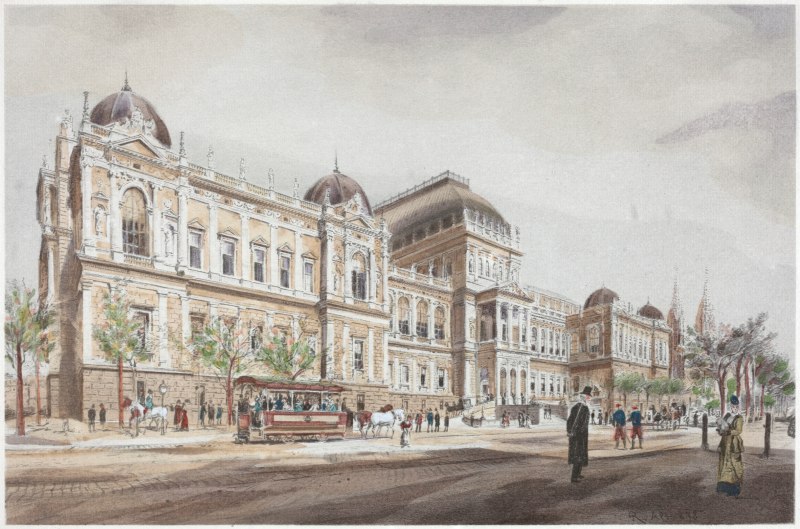
Das Hauptgebäude der Universität Wien im Entwurfsstadium etwa 1873, kolorierte Lithografie
-
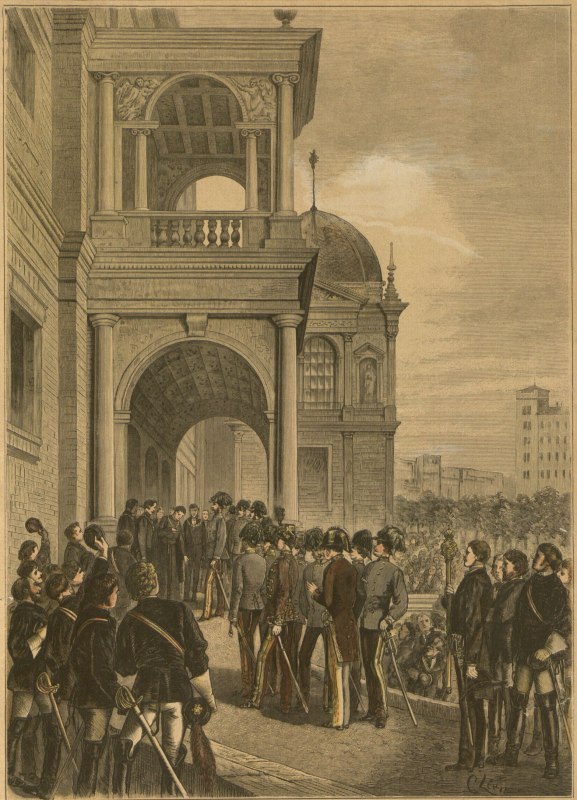
Feierliche „Eröffnung“ des neuen Universitätsgebäudes durch Kaiser Franz Joseph am 11. Oktober 1884
Der Empfang Kaiser Franz Josephs vor dem Hauptportal des neuen Hauptgebäudes der Universität Wien durch den Rektor (Handkolorierte Xylographie nach...
-
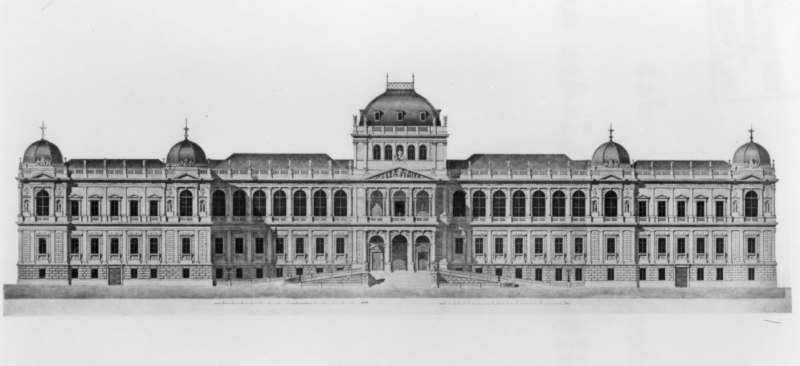
Fassade des Hauptgebäudes der Universität Wien
Fotografie nach einem Stich aus der Bildermappe "Die k. k. Universität in Wien von Heinrich Ferstel " (1892).
-
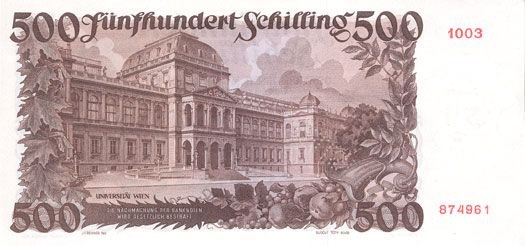
Das Hauptgebäude der Universität Wien auf der Rückseite der 500 Schilling-Note (1953)
-
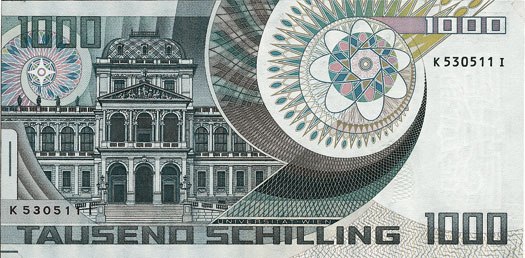
Das Hauptgebäude der Universität Wien auf der Rückseite der 1000 Schilling-Note (1983–1997)
-
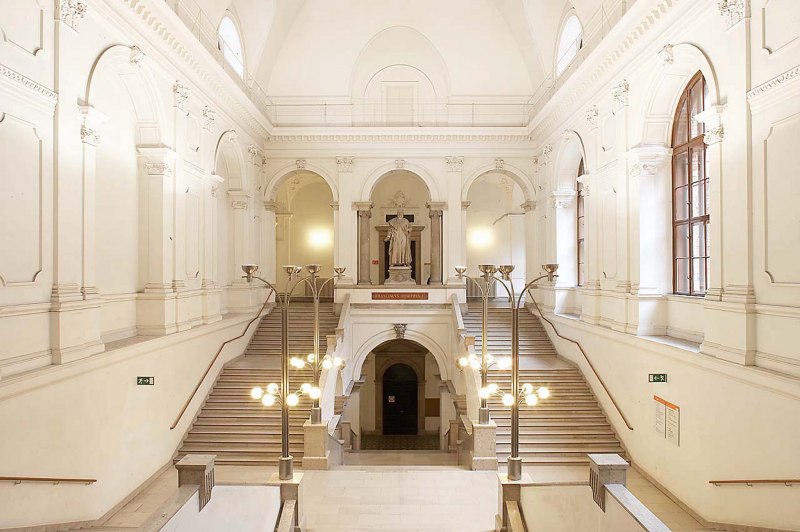
Die Juristenstiege im Hauptgebäude der Universität Wien, 2013
Zuletzt aktualisiert am 04.03.2024 - 20:33
-
Heinrich von Ferstel
7.7.1828–14.7.1883 -
Franz Joseph I. (Habsburg-Lothringen)
18.8.1830–21.11.1916

